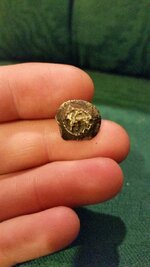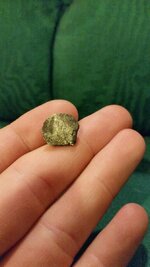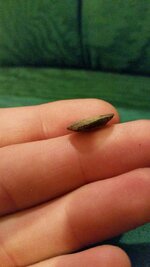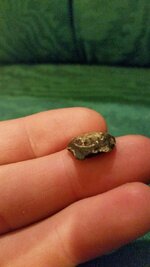Patriot Relics
Silver Member
- Feb 6, 2014
- 3,709
- 5,615
- 🥇 Banner finds
- 5
- Detector(s) used
- CTX-3030, Deus XP II
- Primary Interest:
- Relic Hunting
Hey guys,
Dug this curious copper/bronze coin inches from a Philip IV 4 reale that I recovered earlier this year. Initially it appeared unassuming until light cleaning revealed a raised impression of what looks like a lion. It is fairly crude and I'm still not convinced as to what it is. It is slightly larger than a dime and more of a struck lump than a symmetric coin. My gut is that it may be a maravedis coin. Any help with an ID is greatly appreciated!
inches from a Philip IV 4 reale that I recovered earlier this year. Initially it appeared unassuming until light cleaning revealed a raised impression of what looks like a lion. It is fairly crude and I'm still not convinced as to what it is. It is slightly larger than a dime and more of a struck lump than a symmetric coin. My gut is that it may be a maravedis coin. Any help with an ID is greatly appreciated!




Dug this curious copper/bronze coin
 inches from a Philip IV 4 reale that I recovered earlier this year. Initially it appeared unassuming until light cleaning revealed a raised impression of what looks like a lion. It is fairly crude and I'm still not convinced as to what it is. It is slightly larger than a dime and more of a struck lump than a symmetric coin. My gut is that it may be a maravedis coin. Any help with an ID is greatly appreciated!
inches from a Philip IV 4 reale that I recovered earlier this year. Initially it appeared unassuming until light cleaning revealed a raised impression of what looks like a lion. It is fairly crude and I'm still not convinced as to what it is. It is slightly larger than a dime and more of a struck lump than a symmetric coin. My gut is that it may be a maravedis coin. Any help with an ID is greatly appreciated!











